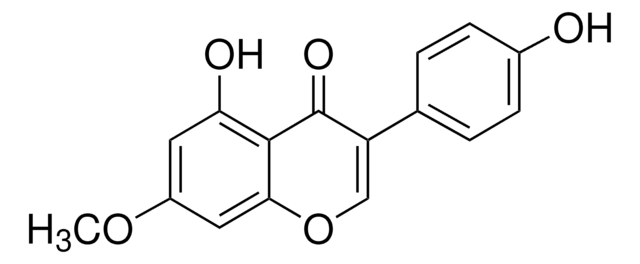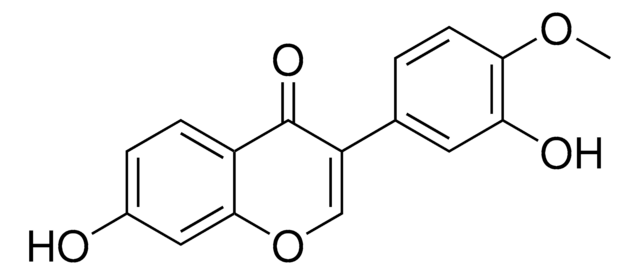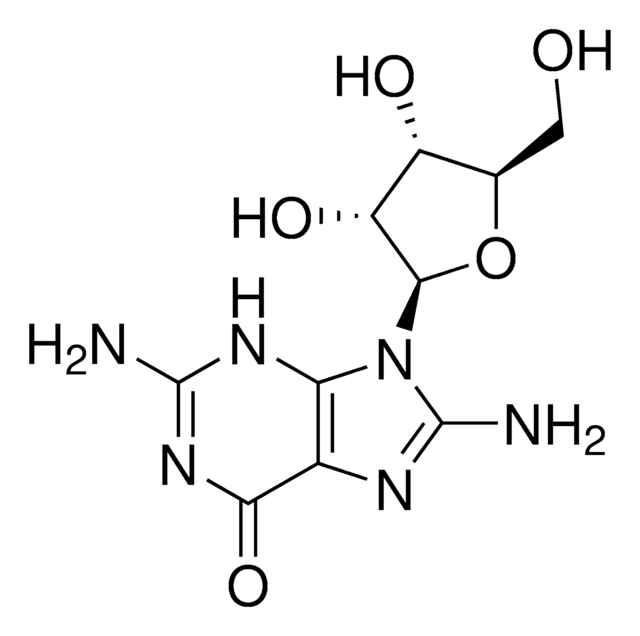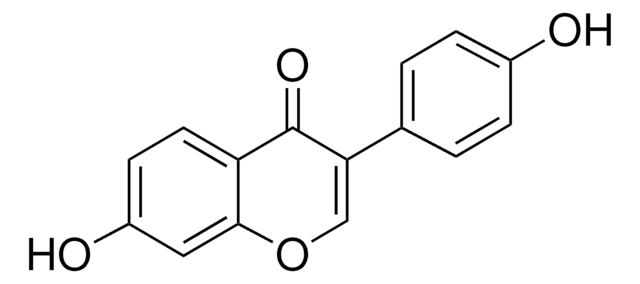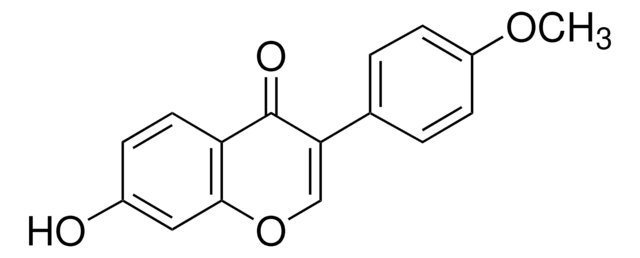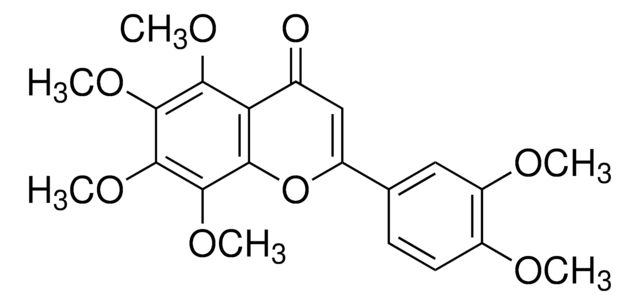SML0953
Cirsiliol
≥90% (HPLC)
Sinônimo(s):
2-(3,4-Dihydroxyphenyl)-5-hydroxy-6,7-dimethoxy-4H-1-benzopyran-4-one, 3′,4′,5-Trihydroxy-6,7-dimethoxy-flavone, 5,3′,4′-Trihydroxy-6,7-dimethoxyflavone, 6,7-Dimethoxy-5,3′,4′-trihydroxyflavone, 6-Hydroxyluteolin-6,7-dimethyl ether, 6-Methoxyluteolin 7-methyl ether, Crisiliol
About This Item
Produtos recomendados
Nível de qualidade
Ensaio
≥90% (HPLC)
Formulário
powder
condição de armazenamento
protect from light
cor
white to beige
solubilidade
DMSO: 10 mg/mL, clear
temperatura de armazenamento
2-8°C
InChI
1S/C17H14O7/c1-22-14-7-13-15(16(21)17(14)23-2)11(20)6-12(24-13)8-3-4-9(18)10(19)5-8/h3-7,18-19,21H,1-2H3
chave InChI
IMEYGBIXGJLUIS-UHFFFAOYSA-N
Ações bioquímicas/fisiológicas
Características e benefícios
Palavra indicadora
Warning
Frases de perigo
Declarações de precaução
Classificações de perigo
Acute Tox. 4 Oral
Código de classe de armazenamento
11 - Combustible Solids
Classe de risco de água (WGK)
WGK 3
Ponto de fulgor (°F)
Not applicable
Ponto de fulgor (°C)
Not applicable
Escolha uma das versões mais recentes:
Certificados de análise (COA)
Não está vendo a versão correta?
Se precisar de uma versão específica, você pode procurar um certificado específico pelo número do lote ou da remessa.
Já possui este produto?
Encontre a documentação dos produtos que você adquiriu recentemente na biblioteca de documentos.
Conteúdo relacionado
Apoptosis, or programmed cell death (PCD), is a selective process for the removal of unnecessary, infected or transformed cells in various biological systems. As it plays a role in the homeostasis of multicellular organisms, apoptosis is tightly regulated through two principal pathways by a number of regulatory and effector molecules.
Nossa equipe de cientistas tem experiência em todas as áreas de pesquisa, incluindo Life Sciences, ciência de materiais, síntese química, cromatografia, química analítica e muitas outras.
Entre em contato com a assistência técnica


